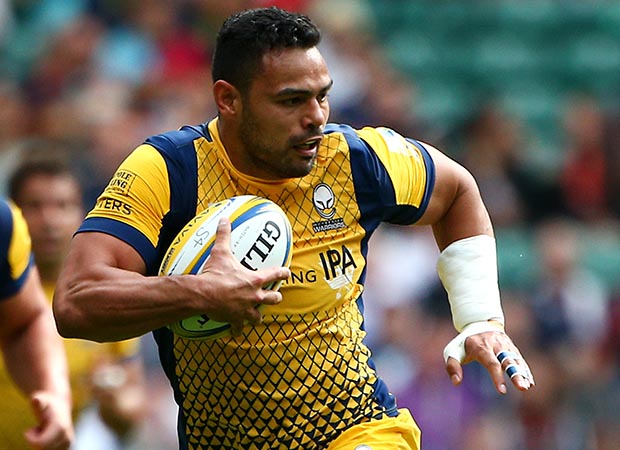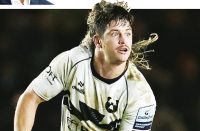 Owen Farrell‘s game has really developed, and the 10-12 link he had with George Ford in the Six Nations and on the summer tour of Australia truly worked. However, Ford-Farrell is not the fit for me. It works for now, but it is not the best combination – and when Eddie Jones eventually finds a 12, Ford and Farrell will be competing for the 10 shirt for the rest of their careers.
Owen Farrell‘s game has really developed, and the 10-12 link he had with George Ford in the Six Nations and on the summer tour of Australia truly worked. However, Ford-Farrell is not the fit for me. It works for now, but it is not the best combination – and when Eddie Jones eventually finds a 12, Ford and Farrell will be competing for the 10 shirt for the rest of their careers.
What we saw from Farrell when he first came into the England side was a narrow passing game, an okay kicking game, an average running game, confrontational defence, and very good goal-kicking. Since then with every season I’ve seen his passing game get wider, the running game get stronger, the kicking improve, the defence staying strong, and the goal-kicking become world class.
Ford understands better than Farrell when and how to move, and he is an instinctive player who has that ability to see the game three steps ahead – but even in that area Farrell is closing the gap.
His performance in Toulon last weekend was phenomenal. For Farrell to come back and put in a performance like that after three months out of the game showed where he is in terms of confidence. Great players do not stand still, and in terms of development every season Farrell has an upgrade – and he does it despite being England’s first choice goal-kicker and also playing in a position where he has to deal with pressure constantly.
South Africa will be incredibly vulnerable when England open the autumn series against them at Twickenham in three weeks’ time, and I would pick Farrell, Ben Te’o and Jonathan Joseph as a midfield to shake them to the bone, and run them off their feet. That would give you the option of bringing Ford on at fly-half and Farrell reverting to inside-centre if needed.
If Eddie Jones wants to see what impact that brings, there’s no reason to be afraid of doing that against South Africa. He has wanted a powerful, explosive runner at inside-centre since he arrived, earmarking Manu Tuilagi for the role initially, and, when he was injured, pinning his hopes on Te’o, right. When he too was injured, and Jones decided the Luther Burrell transplant wasn’t working in the Australia tour opener, he went for the Ford-Farrell option.
However, there is no doubt in my mind that Jones wants a dynamic 12, and I’m convinced that Ford-Farrell is a stop-gap until one is found. That’s why if Te’o has the impact against South Africa he wants, then he’ll be staying.
Having ball-carrying threats likeTe’o in as many positions as possible seems to be a very effective way to build an attack, and it is certainly the direction that New Zealand have taken.
There have been different ‘must-haves’ identified by coaches over the last few years. I can remember that all the chat was once about having to score three tries as a prerequisite to winning, and then there was the edict that you could not win if you conceded any more than ten penalties.
Recently, Wales coach Rob Howley came up with scoring 27 points as the magic number for success. All I know is that the best way of scoring 27 points is to score tries, and that to do that you need quick ball. New Zealand do it by counter-attacking very quickly either from poor opposition kicks or from their knock-ons. Whichever way, the All Blacks are in full flow almost instantaneously – they sync, they get connected, and there they go.
Jones says he doesn’t want to play like New Zealand, but you cannot attack and break defences without quick ball – so however England play, they will have that in common with the All Blacks. In addition, England are a side that can improve what they do off turn-over ball.
When you have a side with a backline featuring Anthony Watson, Jack Nowell, Jonny May, Jonathan Joseph, Elliot Daly and Mike Brown, you have the players to max-out on counter-attack off quick ball. May’s try against New Zealand two years ago showed that – but to generate quick ball you have to have explosive ball-carriers, and and if you have one or two Tuilagis, Te’os or Burrells in the backline you are even more in business.
However, you need them in the forwards as well as the backs. Last season Wasps had about six players in their pack who were dynamic carriers with the power and footwork to get forward momentum, and it transformed them.
At the moment England have three tackle-busting runners with the pace and strength to consistently make an impact at international level, and they are Mako Vunipola, Maro Itoje and Billy Vunipola. They have others just below that level in Courtney Lawes, George Kruis, and a few more on the bench in Joe Launchbury, Jamie George and Jack Clifford. There are also more decent carriers like Nathan Hughes and Ben Morgan waiting in the wings along with the injured James Haskell.
The more of them you have, the more tries you will score. No defence in the world can contain three or four phases of quick ball and not be broken by the confusion and the space it creates.
Having players making tackles and doing their shirt-number jobs is non-negotiable at international level, but then you must have added extras – and where players like the Vunipola brothers and Itoje are X-Factor Extra is that they bring so much outside their day jobs. This helped England to score 13 tries in the Six Nations, and it was a good start for Jones even though Wales scored 17 tries, and Ireland 15.
This contrasted with the attitude that England had on tour in Australia, which was, ‘we don’t need the ball to win, and we will feed off opposition mistakes’. To be fair, scoring nine tries in an away series with the little possession and territory England had was impressive – but the main reason was because they worked so hard in defence.
England have to make upgrades in attack, especially in terms of ball-carriers, because if they concede the territory and possession they did against Australia, it will not work against the very best.























